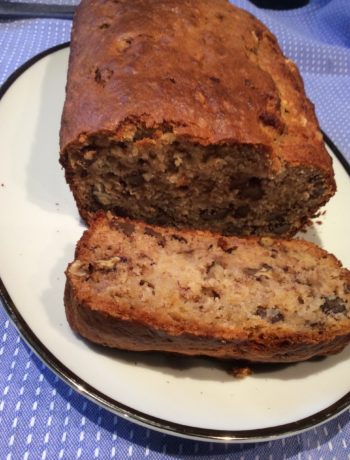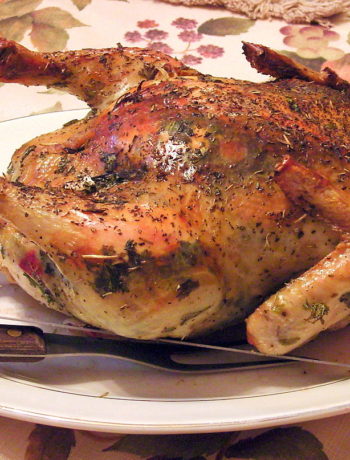When our British weather sends us something miserable, is there anything more comforting than a bowl of homemade soup? Is there anything else that tells us that life isn’t that bad and it will get better? (OK, so wine or chocolate work here too) After all, think of the theme of so many of the advertisements for bought soups; they usually focus on the homely theme or on the fresh and natural aspect. So far, so good – until you read the ingredients or check the cost. Not so good.
I read recently that tinned soups are one of the biggest offenders for salt and as for ingredients, I am speechless (not a frequent occurrence….). What on earth are Wheat Flour, Citric Acid, Modified Cornflour (modified how?), Polyphosphate and Sodium Phosphate doing in soup? Fresh soups are by far and away less offensive on the ingredient front but that is unfortunately reflected in the price.
It is possible to easily avoid these dilemmas by making your own. It is so easy to make soup, it almost criminally simple and once you have the Foundation Recipe under your belt, you can use whatever ingredients are seasonal, well priced, or just what you fancy!
Before I dive into the Foundation Recipe, I want to just make a few comments on the ingredients I have listed:
I soften my onion, carrot and celery mixture in olive oil, unsalted butter or a mixture of both. It depends on the flavour I want to achieve; you’re free to use what you like, including sunflower oil. Personally I avoid rapeseed oil as I can always detect it in a soup (or indeed in most dishes) and I dislike it.
Note too that the ingredients I just listed are not mandatory. I pretty much always use an onion (or shallot if I want a more subtle flavour) and frankly, carrot and celery isn’t always needed. I find it helpful to just take a moment before I decide, to imagine the end flavours I want to achieve; if it doesn’t include carrot or celery, I don’t use them.
Stock is a fraught subject that can bring normally calm, restrained cooks to scarlet-faced fury. Yes, it is lovely if you can always have homemade chicken stock to hand and if you have had a roast chicken and you have the time, yes, make some. But, please, don’t stress about it, or even shy away from making soup simply because your freezer isn’t stocked with homemade stock! It is perfectly acceptable to use bought stock (Waitrose and Truefoods both produce excellent stock without salt) and I always have Marigold Organic Reduced Salt Bouillon Powder and Kallo Organic Very Low Salt Vegetable Stock Cubes in the cupboard. That Swiss brand or the three letter brand – don’t even go there. Have you read the ingredients?
Garlic – love it, so it finds its way into most of my soup. If you don’t like it, don’t use it but might I plead with you to give it a gentle try in at least tomato soup?
OK, sermon over, let’s get started. I have tried to give very clear instructions here and if I have over done it and trespassed into the “teaching my grandmother to suck eggs” territory, sorry, but some of you might never have done this before and I am a tad evangelical about the numerous benefits of homemade soup!
In terms of cost, this comes at about £1.29 and can serve four as a first course or two for lunch as a single course. This compares well, I believe, with about £1.89 for 600m of fresh tomato soup in the supermarket. Yes, tinned tomato soup is cheaper, at about 99p for a well-known brand. But does it really taste of tomato?
Now, moving on to other flavours. You can make soup from pretty much any vegetable, pulse or bean. Let’s say you want lentil soup: soften the soffrito as above then instead of tomatoes, add a couple of handfuls of red lentils and perhaps cumin and a scrap of dried chilli flakes. You might need more of the stock at this stage and also, lentils are devils for catching on the bottom, so keep the flame low and stir frequently, while the soup simmers lazily, with the occasional plop. You might want spinach and broccoli soup, so add washed broccoli florets, let them cook for about 10 minutes and then add washed, torn spinach, cooking for another ten minutes or so. This is splendid with a scrape of nutmeg and a generous amount of cream and in my mind, does need blending before adding the cream.
You can experiment, vary and play with this foundation recipe to your heart’s content. The only thing I would say is try to keep it seasonal and use left over vegetables, too. They just need less simmering. I did try to make something once with left over roast potatoes. Don’t. Just don’t. Horrid. Oh and taste, taste, taste as you go, and if you do succeed with roast potatoes, let me know!
In The Soup
Print RecipeIngredients
- 1 medium onion, peeled and chopped into 0.5mm dice
- 1 medium carrot, peeled and chopped into 0.5mm dice
- 1 stick celery, chopped into 0.5mm dice and if it’s a bit stringy, swipe a potato peeler down it to whisk away the strings
- This combination is called a soffrito in Italian cookery. I know it exists in French cookery too, but a) I can’t remember the French word for it and b) my heart is in Northern Italy and particularly in her kitchens!
- 1 tbsp olive oil
- 1 tbsp unsalted butter
- 1 (or more) cloves of garlic, finely chopped, or crushed under the blade of a knife (see over in My Kitchen under Techniques for how to do this)
- I tin Italian tomatoes, chopped or whole - no matter - but they MUST be Italian
- a few sprigs of fresh thyme
- 1 tbsp Italian tomato puree
- 1 litre chicken or vegetable stock - see above
- salt and freshly ground pepper
Instructions
Take a pan or flameproof casserole with a thick, heavy base. I use an ancient and much loved 20cm Le Creuset which has been with me for more than 30 years
Put it on a low heat, add the oil and butter then the soffrito, stir and allow to soften until everything becomes soft and fragrant
Under no circumstances allow this to burn, so you might need to be a bit hawk-like at first, until you understand how your pan and flame perform together
You can add a modicum of salt at this point, but go easy
Add the garlic and soften that too, but again no burning, as burnt garlic is just horrid
I like to add the thyme at this point and to be honest, don’t always bother to strip the leaves off the stems; they will fall off in the process of cooking and just remember to fish out the stems before you blend
Add the tin of tomatoes all in one go; if they are whole, mash them up a bit with a wooden spoon
Add the tomato puree and then the stock, using at this stage probably about 750 ml, and stir everything round
Add a few grinds of pepper, partly cover the pan having brought the contents to a gentle simmer
Leave it for about 20 - 25 minutes, stirring occasionally to ensure nothing catches on the bottom
The soup should reduce a little during this process, which helps to concentrate the flavour
Turn off the heat and let the soup cool a little
This is the point at which I like to blend a soup, usually using a trusty Kenwood Stick Blender which is just so easy to wash up (just remember to fish out the thyme stems!)
You can of course, use a conventional blender or food processor, and indeed you can leave it chunky and rustic
After blending, it may appear quite thick so just thin it out with the remaining stock
To finish, swirl in some cream, yogurt or creme fraiche and top with a sprinkle of finely chopped chives or parsley




